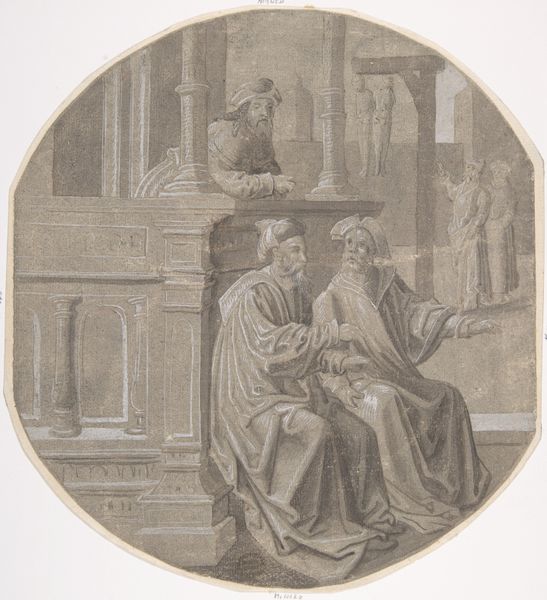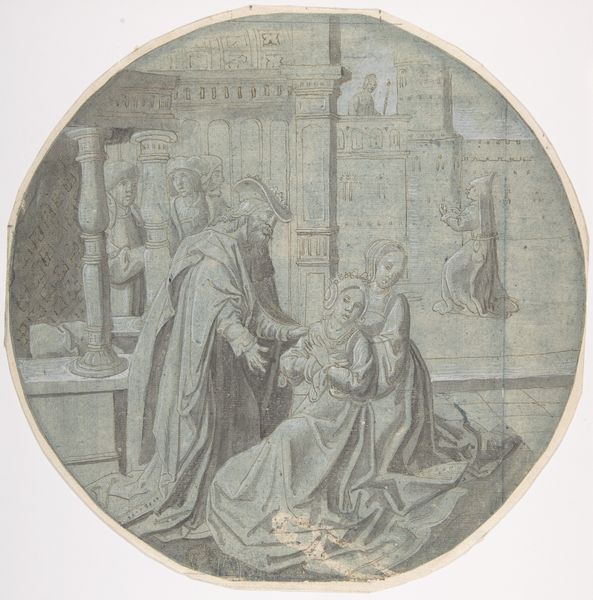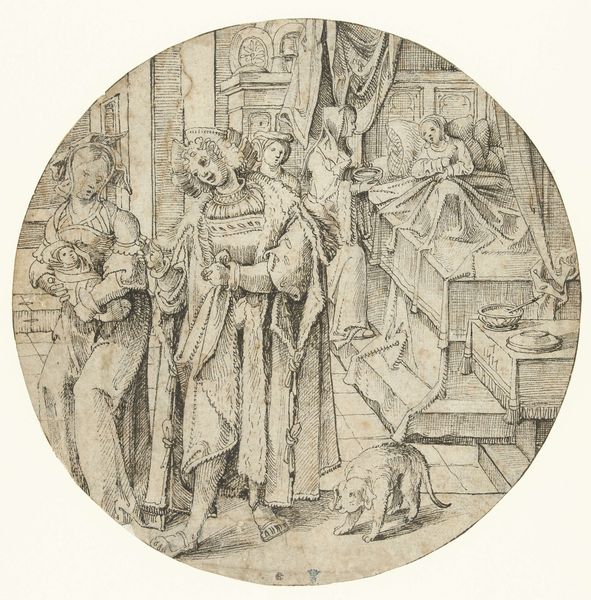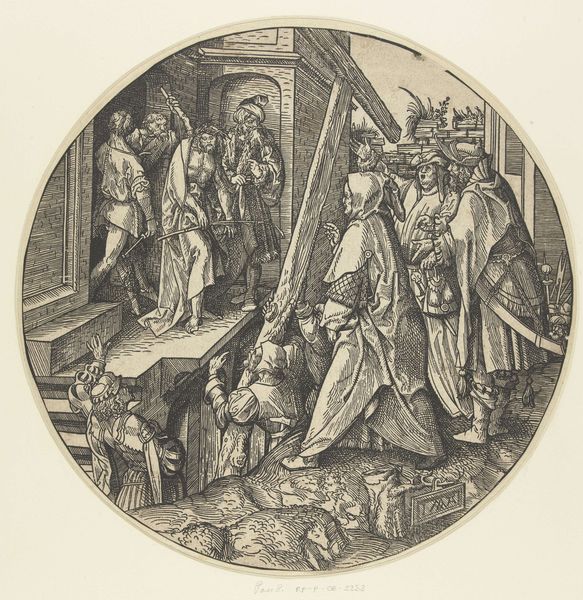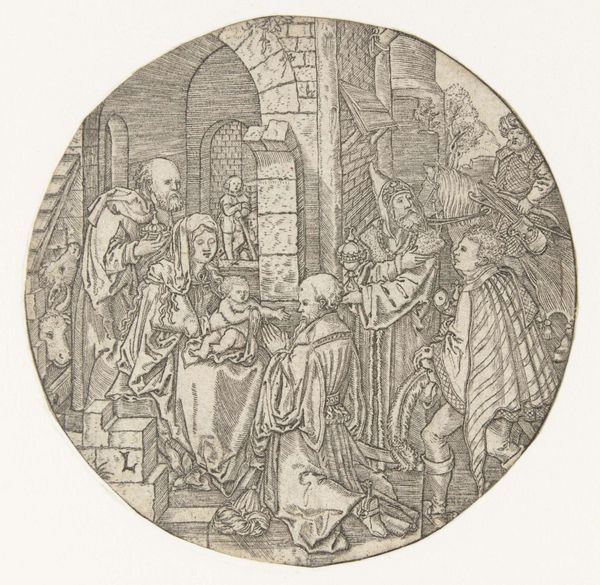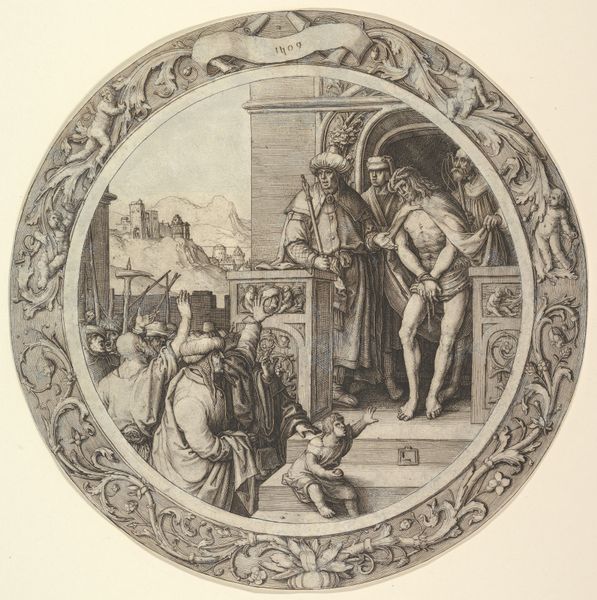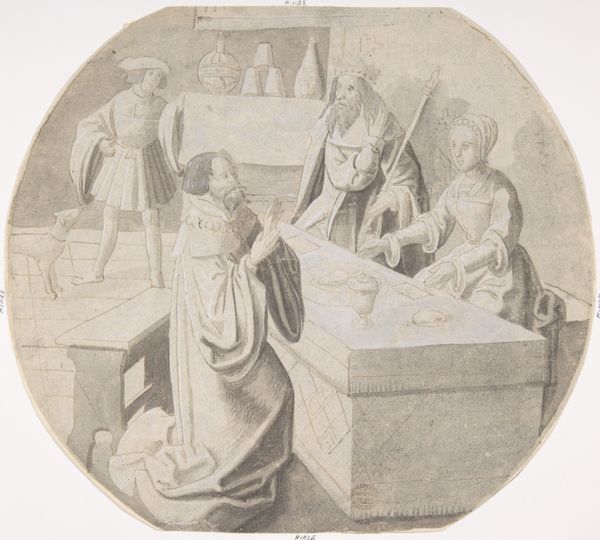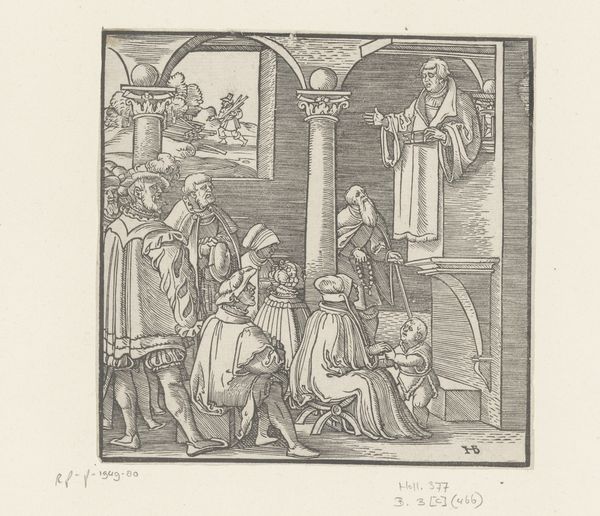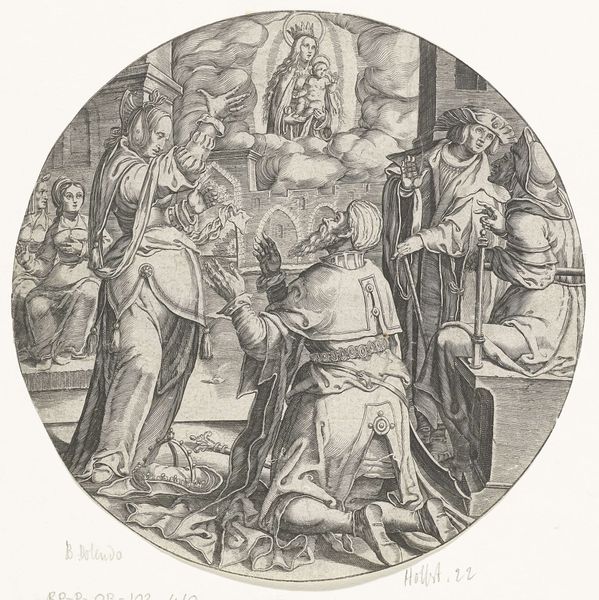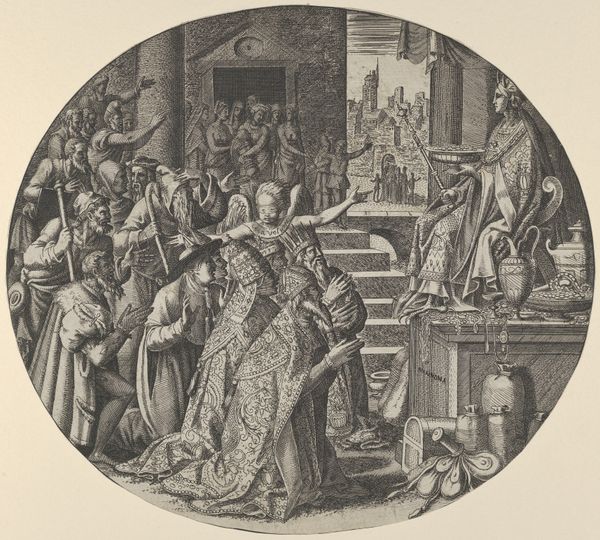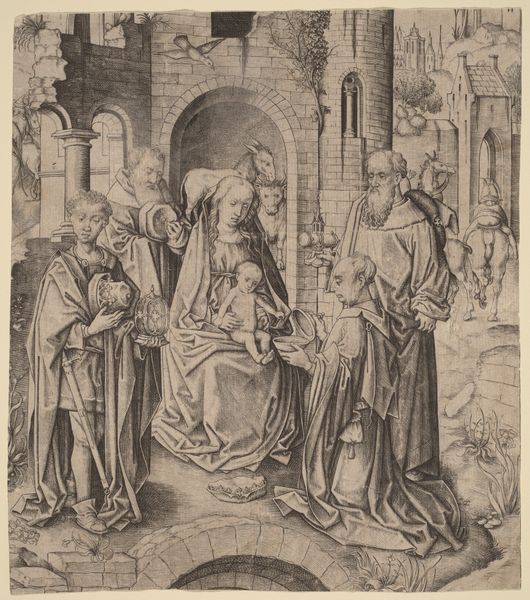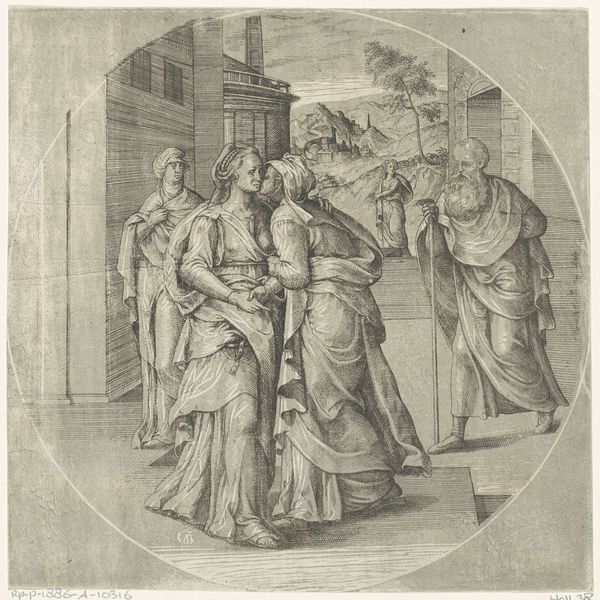
drawing, print, pencil, charcoal, architecture
#
drawing
#
narrative-art
# print
#
charcoal drawing
#
figuration
#
pencil drawing
#
pencil
#
men
#
charcoal
#
history-painting
#
charcoal
#
italian-renaissance
#
architecture
Dimensions: sheet: 8 1/2in. (irregular shape, circular with top and bottom cut off).
Copyright: Public Domain
Editor: Here we have "The Greatness of Mordecai," a charcoal and pencil drawing from the early 16th century, attributed to Pseudo-Aert Ortkens, now residing at the Met. It depicts a group of men in what seems like a court setting. What I find striking is how the artist captures such a vivid scene with seemingly simple materials. What jumps out to you? Curator: This drawing invites us to consider the power dynamics at play. It’s not just a historical depiction, but a representation of authority and how it’s perceived and negotiated. Mordecai, a Jewish figure in the Bible, attains a high position in Persian society, so his “greatness” should be seen within the context of religious and ethnic identity. Notice how his central position and elaborate clothing contrast with the others. What message might this convey about power, status, and difference? Editor: So, it's about more than just showing a historical event? Curator: Precisely. Think about the period this drawing was created in, 16th century. Religious tensions and shifting social structures are critical issues. How might the original audience have understood Mordecai's success? Did it reinforce existing hierarchies or challenge them? And even today, in what way does Mordecai’s ascension mirror or diverge from contemporary experiences of upward mobility within the diaspora? Editor: That makes me think about representation, then and now. Was Ortkens making a statement, or simply illustrating a story? Curator: The artist’s intention is always elusive, but we can interpret the drawing through a lens of power and representation. Does this depiction challenge or reinforce stereotypes? Does it offer agency or simply display triumph? What kind of impact might it have had on different audiences in a very Christian-dominated society? It is a great way to start exploring. Editor: I see. I didn't initially consider the social commentary. It's much more complex than just a biblical scene. Thanks for providing such a multifaceted approach! Curator: Art history is fundamentally an exercise in critical awareness. Engaging with the socio-historical backdrop can reveal much more beyond the surface appearance.
Comments
No comments
Be the first to comment and join the conversation on the ultimate creative platform.
